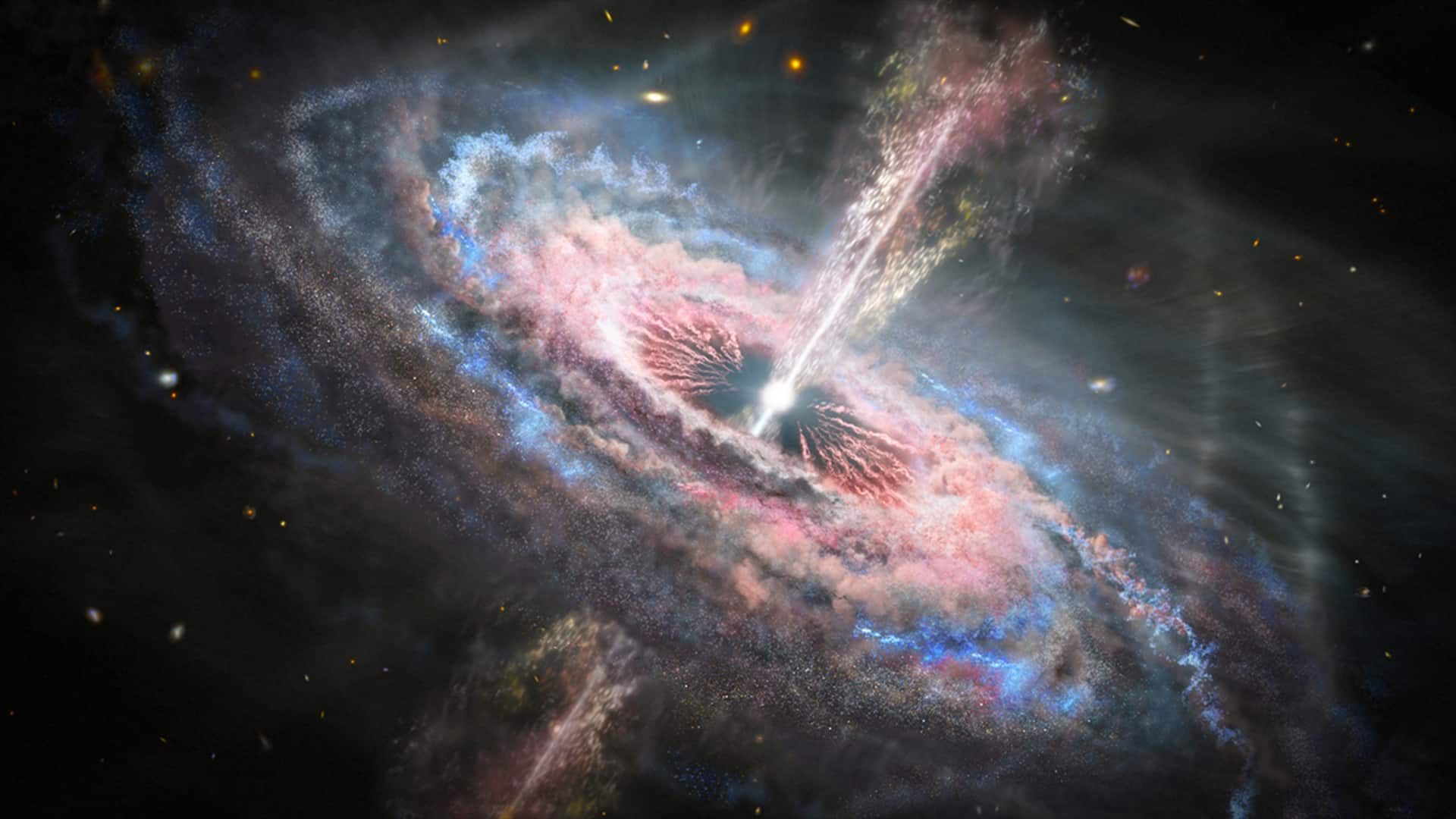
Unique ultra-luminous infrared galaxy found: What makes it special?
What's the story
An international team of astronomers has discovered an ultra-luminous infrared galaxy (ULIRG) behind a well-known quasar, H1413+117 or Cloverleaf. The discovery was made using the Atacama Large Millimeter/submillimeter Array (ALMA) and reported in the Monthly Notices of the Royal Astronomical Society. This is a major find as ULIRGs are some of the most intensely star-forming galaxies in our universe.
Quasar details
Cloverleaf quasar and its significance
Cloverleaf is a quadruply-lensed quasar with a redshift of about 2.56. The recent study, led by Natsuki H. Hayatsu, found the ULIRG behind this quasar while observing it with ALMA. The researchers said, "Dusty, submillimeter-selected galaxies without optical counterparts contribute a non-negligible fraction of the star formation in the early universe."
Galaxy features
Properties of the newly discovered ULIRG
The newly discovered ULIRG is located about six arcseconds away from the Cloverleaf quasar, at a redshift of around 3.39. It has a molecular mass between 40-230 billion solar masses and an estimated black hole mass of about 0.1 billion solar masses. The total X-ray luminosity of this ULIRG was found to be around 400 tredecillion erg/s, with an infrared luminosity at a level of 2.8 trillion solar luminosities.
Gas dynamics
Current evolutionary state and future prospects
The molecular gas in this ULIRG is yet to settle dynamically, possibly due to a gas-rich major galaxy merger in its early stages. The astronomers think that the galaxy will continue as a starburst with its rich molecular budget, triggered by the merging process. They also suggest that this ULIRG could be in the progenitor stage of hot dust obscured galaxies (DOGs) or evolving toward naked active galactic nuclei (AGN) phases.
Future research
Need for more studies to confirm findings
The researchers stress the need for more studies focusing on the molecular gas of this galaxy to confirm its current evolutionary state. They said, "To infer the evolutionary stage of such an optically dark galaxy, be it a massive starburst, QSO [quasi-stellar object], or hot DOG, it is essential to clarify the physical state of the gas." This will be explored in future follow-up studies.